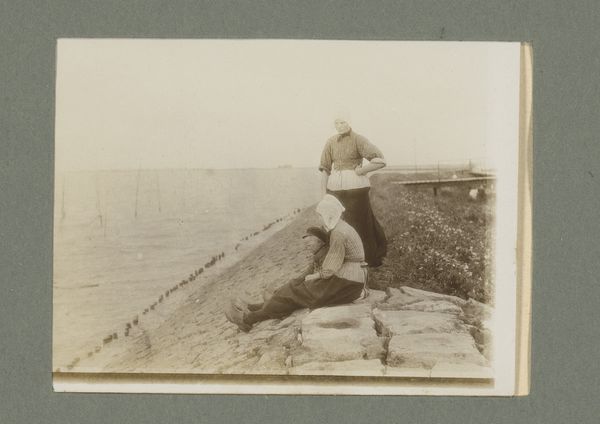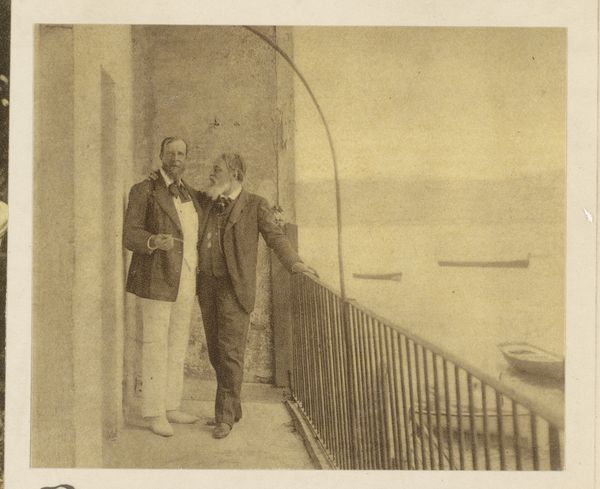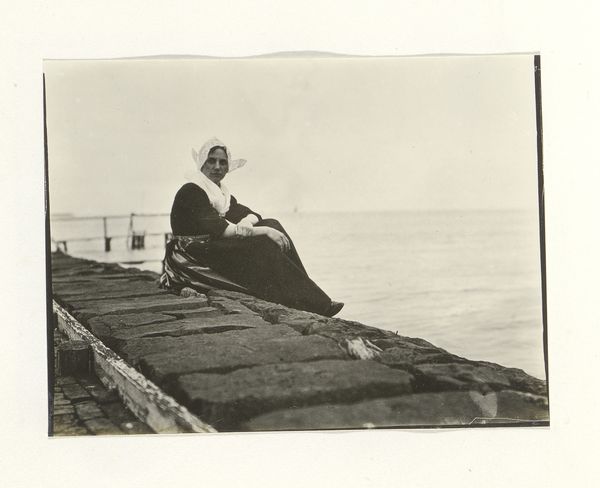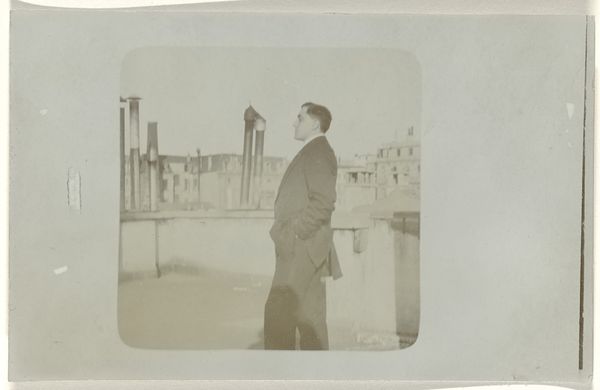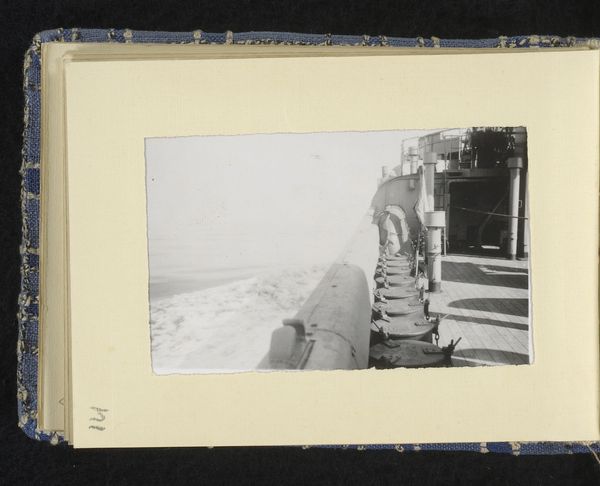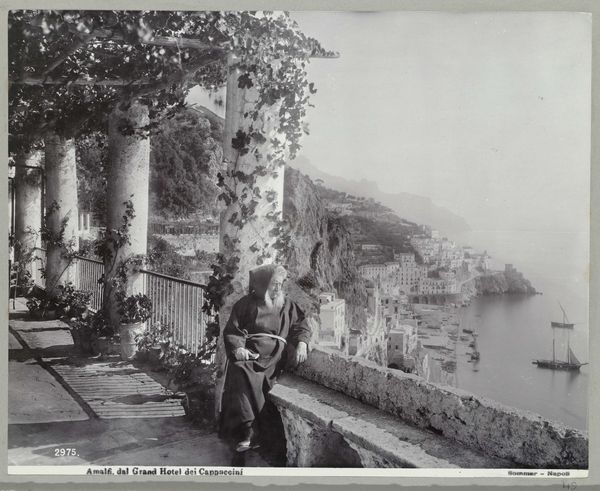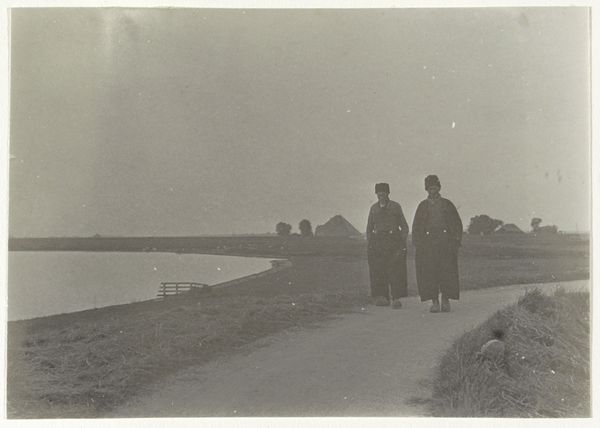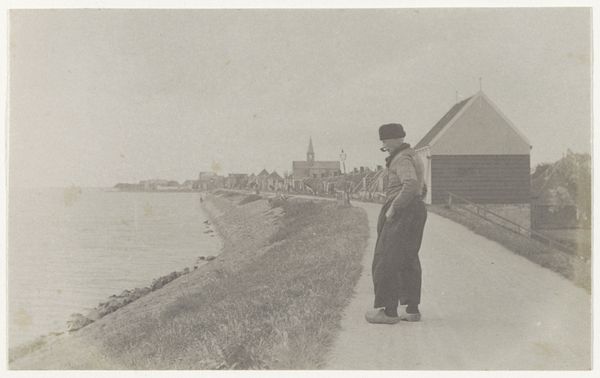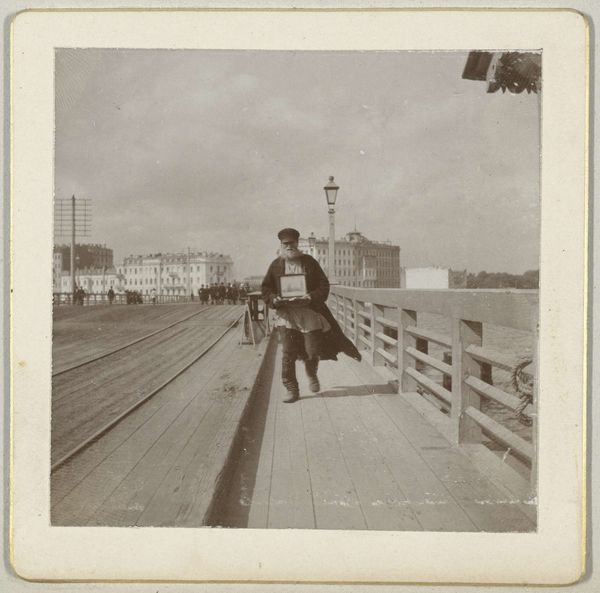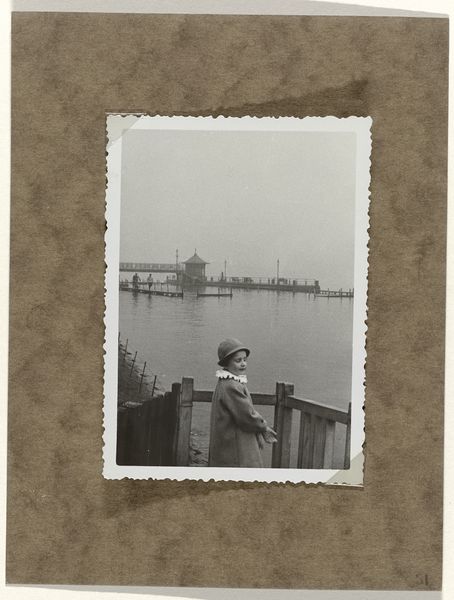
photography, gelatin-silver-print
#
portrait
#
landscape
#
photography
#
gelatin-silver-print
Dimensions: height 78 mm, width 106 mm
Copyright: Rijks Museum: Open Domain
Curator: This is a gelatin-silver print entitled "Victor Hugo op een balkon in Guernsey," which translates to Victor Hugo on a Balcony in Guernsey. It's dated 1868 and part of the Rijksmuseum collection. Editor: It’s atmospheric, certainly. Almost sepia toned, despite being a gelatin-silver print, with a slightly mournful cast over the scene. Curator: The choice to capture Hugo against such a sweeping vista, exiled on Guernsey for his political views, lends itself to a powerful reading of individual versus authority. Editor: I notice his positioning on the balcony, framed by the railings. They remind me of prison bars; Victor Hugo the celebrated French author is trapped by forces of history. Curator: Absolutely. His exile was a direct result of his vocal criticism of Napoleon III, casting Hugo as a champion for republicanism against the Bonapartist regime. This photographic portrait solidifies his image as a resistant hero. Consider the broader European context of 1868 – a period ripe with social unrest and nascent nationalism. Editor: The hazy landscape almost swallows the settlement there; that lighthouse looks so fragile in the face of nature. The composition emphasizes that feeling of vulnerability, yet, it also has undertones of defiance—a man against the elements. Curator: Precisely, Guernsey was, for him, both a literal refuge and a symbolic space for intellectual resistance. The very act of photographing Hugo here creates a powerful political statement. Editor: And beyond his politics, this photographic portrait can be seen as a powerful representation of the artist's gaze. Here we have Victor Hugo, writer, poet, public intellectual presented to us for admiration. Curator: He becomes a sort of emblem of republican values. It is important, I think, to remember how these historical images contribute to myth making in political discourse. Editor: True. Thinking of that, my take is that we have two mythologies intersecting, here: Victor Hugo and that of Romanticism. The symbolism layered through this work just gives more depth. Curator: So in effect the photograph, initially a means of capturing likeness, became a tool to cement a lasting social legacy of the man, and to bolster his politics. Editor: Indeed. The careful rendering of the individual within this particular environment elevates portraiture beyond mere representation, so, it reveals stories within stories.
Comments
No comments
Be the first to comment and join the conversation on the ultimate creative platform.
